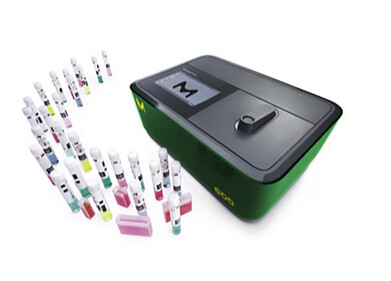Laboratory products
Break the Contamination Chain
Feb 17 2010
With swine flu rapidly sweeping across the globe, it is estimated that a third of the world’s population will be affected by the H1N1 virus. Like seasonal flu, it is believed a second wave of the virus will occur as the virus thrives in winter conditions. The spread of swine flu can be contained if businesses are prepared for the second wave of the virus by providing the correct protective clothing and equipment for employees that will help to
break the contamination chain.
Guidance from authorities across the globe is the same; follow good hygiene rules by washing your hands with soap regularly, protecting your nose and mouth when sneezing or coughing, disposing of used tissues promptly and carefully and cleaning hard surfaces, such as door handles, frequently.
In some occupations, it may be necessary to wear protective clothing to help protect against the spread of the swine flu virus. In highly exposed environments, masks and coveralls have a complementary role to play in limiting the spread of the virus. Masks are helpful for infected people to avoid spreading infected droplets to health care personnel, The coverall, used in conjunction with other personal protective equipment such as gloves and disposable respirators, protect professionals from infected droplets and limit the risk of professionals transporting the droplets and the virus to another person.
To ensure effective protection, a protective garment should: be made of a fabric which is a barrier to the virus; designed to avoid cross contamination; have closure and seams which are tight during exposures and after exposure; and be disposed of in a bio-safe way.
DuPont’s range of Tyvek® suits, that includes Tyvek® Classic and Tyvek® Classic Plus, provides adequate protection against contamination. From their product portfolio, Tyvek® Classic Plus (Type 4,5,6) provides a more adequate barrier by the combination of the fabric, the tight seams and the tight closure of the zipper flap. Tyvek® Classic (Type 5,6) may provide an adequate barrier, however, the seams and the zipper coverage are less particle tight than those of Tyvek® Classic Plus garments. Both garments are made of the same Tyvek® material which has shown an adequate barrier against infected particles (EN 14126). As a result of its manufacturing process, Tyvek® has an inherent barrier that delivers excellent protection and can help against the spread of the swine flu virus.
Digital Edition
Lab Asia 31.6 Dec 2024
December 2024
Chromatography Articles - Sustainable chromatography: Embracing software for greener methods Mass Spectrometry & Spectroscopy Articles - Solving industry challenges for phosphorus containi...
View all digital editions
Events
Jan 22 2025 Tokyo, Japan
Jan 22 2025 Birmingham, UK
Jan 25 2025 San Diego, CA, USA
Jan 27 2025 Dubai, UAE
Jan 29 2025 Tokyo, Japan



















